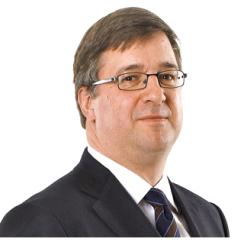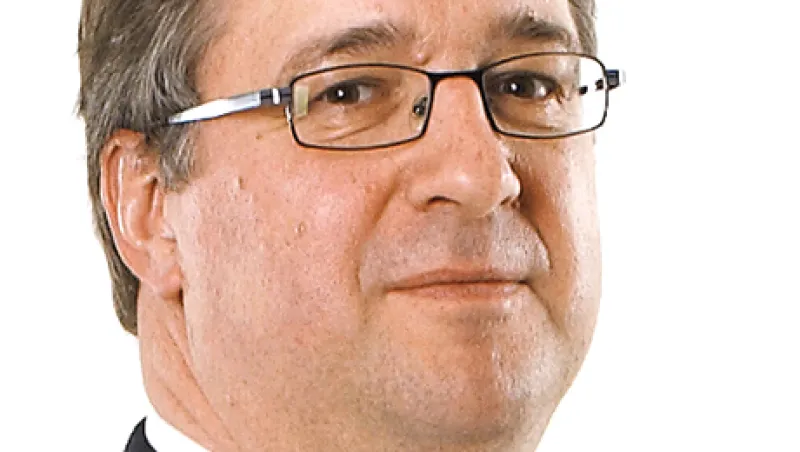Managing director and president of Australia’s Future Fund, Mark Burgess leads a dynamic sovereign wealth fund with A$82.4 billion ($85.1 billion) in assets and a reputation for savvy risk management. Launched in May 2006 with just A$18 billion, Future Fund — which kept most of its assets in cash during the financial crisis — went on to build a highly integrated, risk-weighted portfolio of investments. Under the guidance of founding CIO David Neal, it also broke with SWF tradition by challenging its staff to look beyond their particular areas of expertise and think about risk and return across the total portfolio. The result: an innovative organization known for its flexible investment style and its ability to deploy assets throughout diverse sectors and geographies.
That flexibility drew Burgess, previously CEO of Sydney-based investment firm Treasury Group (and a former vice chairman and CEO for Europe and the Middle East for Credit Suisse Asset Management in London), to join the fund in 2011. Over the past three years, Future Fund has posted an annualized return of 7.9 percent. Burgess, 50, recently spoke to London Bureau Chief Loch Adamson about the fund’s commitment to long-term investing, the challenge of working to an ambitious absolute-return benchmark and the hazards that remain in still-volatile but slowly recovering global markets.

I’m focused on the Future Fund’s next phase of evolution, which represents a natural, normal progression for the organization. In our first phase we were just a buyer of assets; now we buy, monitor and sell. Selling is a very different discipline psychologically than buying. In the Future Fund’s first five years, we didn’t sell that many assets; we just went around acquiring things. We’ve sharpened this up now, and we have methods to review and refresh the portfolio because we need to make sure that it’s kept fresh and alive at all times. We don’t want it collecting any barnacles.
How does the investment team source new ideas?
We do our own work. We want to be known as original thinkers — and I feel strongly that for a fund of this size, developing our own view is critical. We don’t rely on consultants. We expect our people to add value and to use our managers to help them do this. Although we do use consultants on occasion for targeted assignments, we’ve made a conscious choice to be accountable for our own investment decisions. Relying on external consultants only clouds the issue of accountability. If we’re going to run a portfolio that is as well diversified as the Future Fund’s, we need to make our own choices. If you are accountable, you will be a better investor.
What does it mean for the team to take a total-portfolio view?
The sector teams interact on various internal committees. We have an asset review committee, for example, that looks at new asset classes and reviews existing holdings, and the members all debate and discuss their ideas. So the property guys will be there, grilling the timberland people, looking at those investments completely differently but asking really good, practical questions. All of the teams are continually checking and counterchecking their thinking against the views of the other teams, but they still feel a sense of ownership about what they do. It’s not easy; that’s why it isn’t perfect. But Dave [Neal] structured these interactions very wisely, and we often send team members out on investing trips together, so that a private equity guy gets to visit a global infrastructure firm, for example, and ask questions. Since I’ve been here we’ve sent people on about 15 joint research trips. I’ve gone on one too.
Are there any disadvantages to this type of structure?
Some people don’t have the ability or tolerance to work across different asset classes. And if discussions are too general, you won’t get to the pointy end of a decision.
What hot topics have you discussed lately?
I was talking to the guys last night about the cost of capital, which is a big question mark right now. What is the appropriate cost of capital? You might as well have everyone in the room on that one, because everyone is going to have to get to grips with it. You don’t want one sector team off buying things because they think the cost of capital is going to come down to, say, 3 percent, while another team is being too cautious and trying to sell their best assets because they think they’re overpriced. We don’t necessarily want a single thought or view to come out of these meetings, though. What we want is an open debate and discussion.
How do you think about risk?
Our philosophy is that you can’t look at risk with a single number, so we look at a whole range of risks and a raft of risk measures. We use a matrix, or a scorecard, and look at a number of qualitative and quantitative risks. Quantitative really can’t do it alone; the financial crisis proved that. So we seek a balance between the two, and for that you need an experienced team of experts who have seen cycles before and know how to identify them. We also look at emerging risks or other types of risks, and one that is always worth discussing is complexity risk. If you look at institutions around the world, many of them have ended up with complex portfolios by allocating to far too many managers or sanctioning too many holdings, and so we are now actively debating how complex we are going to allow the fund to become as it matures. But we’re in the lucky position of having a new portfolio and being able to think about those issues in advance.
How difficult is it to manage to an ambitious absolute-return benchmark of at least an annualized 4.5 percent over inflation?
It is an ambitious benchmark, there is no question about that, particularly when you look at the overall period between 2007 and 2008, but I think it’s important to focus on what the benchmark says about our investment philosophy. We expect to capture above-average growth, so holding too much cash on its own, for example, simply won’t work. We have to take risk but don’t want to take excessive risk. We aim to beat the benchmark by seizing the best opportunities we can and optimizing our portfolio.
What are the advantages to running a pool of unconstrained sovereign assets?
We don’t face any withdrawals until 2020, and that is a slightly unusual position to be in, for a state-owned fund. We often think about the competitive advantage we’ve been handed, but we also think about the advantages that we can bring to the table, as investors — that is a key part of our philosophy. People remark on the fact that our portfolio looks quite different from those of some of the big Australian superannuation funds, but that’s because we have a slightly different mandate and a somewhat distinctive approach to investing. We have our own playing field.






